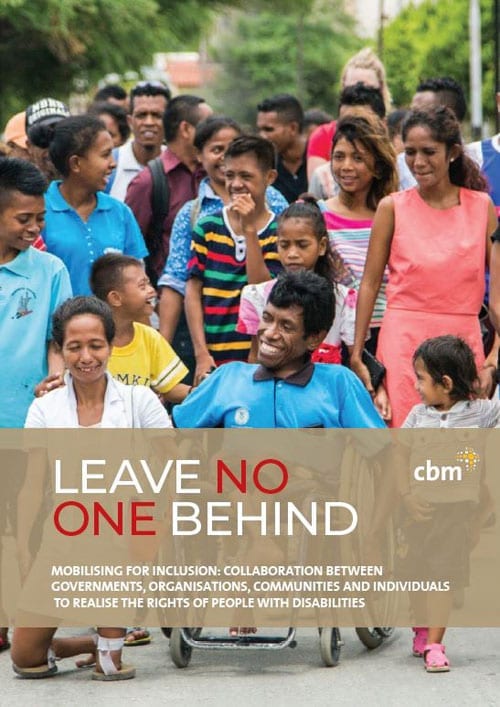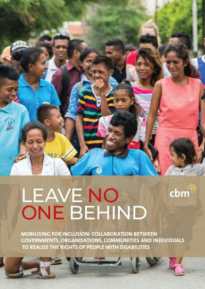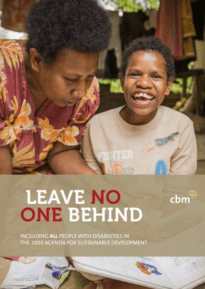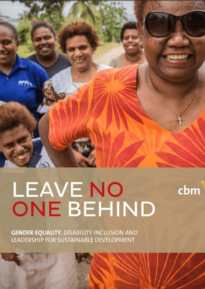
CBM’s Leave No One Behind series makes a case for disability inclusion in international development
CBM Australia makes the case for why organisations need to take actions be taken to bolster implementation of and adherence to the United Nations Convention on the Rights of People with Disability (UNCRPD), and action towards achieving the Sustainable Development Goals for all people with disabilities. The 2030 Agenda for Sustainable Development and Sustainable Development Goals (SDGs) provide a roadmap and the UNCRPD provides an instruction manual to ensure that the world we create is inclusive for all people with disabilities. Used together, these frameworks grant us the means to ensure that those at risk or experiencing existing disadvantage – such as people with disabilities – are no longer left behind.
How people experience and benefit from development processes can be profoundly different depending on their gender identity, age, ethnicity, sexual orientation, socioeconomic circumstances or other characteristics.
People with disabilities comprise around 15% of the global population. They are women and men, boys and girls, they are young and old, they are all ethnicities, in all circumstances, all orientations and all characteristics. And they are disproportionately represented in every under-served and vulnerable group.
 Leave No One Behind: Mobilising for inclusion: collaboration between governments, organisations, communities and individuals to realise the rights of people with disabilities
Leave No One Behind: Mobilising for inclusion: collaboration between governments, organisations, communities and individuals to realise the rights of people with disabilities
This document provides a range of data, case studies and learning, where CBM makes the case for inclusion.
 Leave No One Behind 2: Including all people with disabilities in the 2030 agenda for sustainable development
Leave No One Behind 2: Including all people with disabilities in the 2030 agenda for sustainable development
CBM makes the case for how the Australian Government can implement action towards the Sustainable Development Goals for all people with disabilities, maintain its global leadership in disability-inclusive development and remain true to the guiding principles of the Development for All strategy. We outline how the deaf community can be better supported in international development, and how to ensure that people with intellectual, psychosocial and multiple disability are not left behind.
 Leave No One Behind 3: Gender equality, disability inclusion and leadership for sustainable development
Leave No One Behind 3: Gender equality, disability inclusion and leadership for sustainable development
CBM outlines how women and girls with disabilities experience complex layers of marginalisation, and face heightened barriers to achieving the targets set out in the SDGs framework. CBM argues that in order to truly end discrimination against women and girls particular attention must be given to the substantial global community of women and girls living with disability. This paper looks at the barriers that individual women experience and outlines how the international development community can better consider enabling environments for women and girls with disability to reach their full potential.
